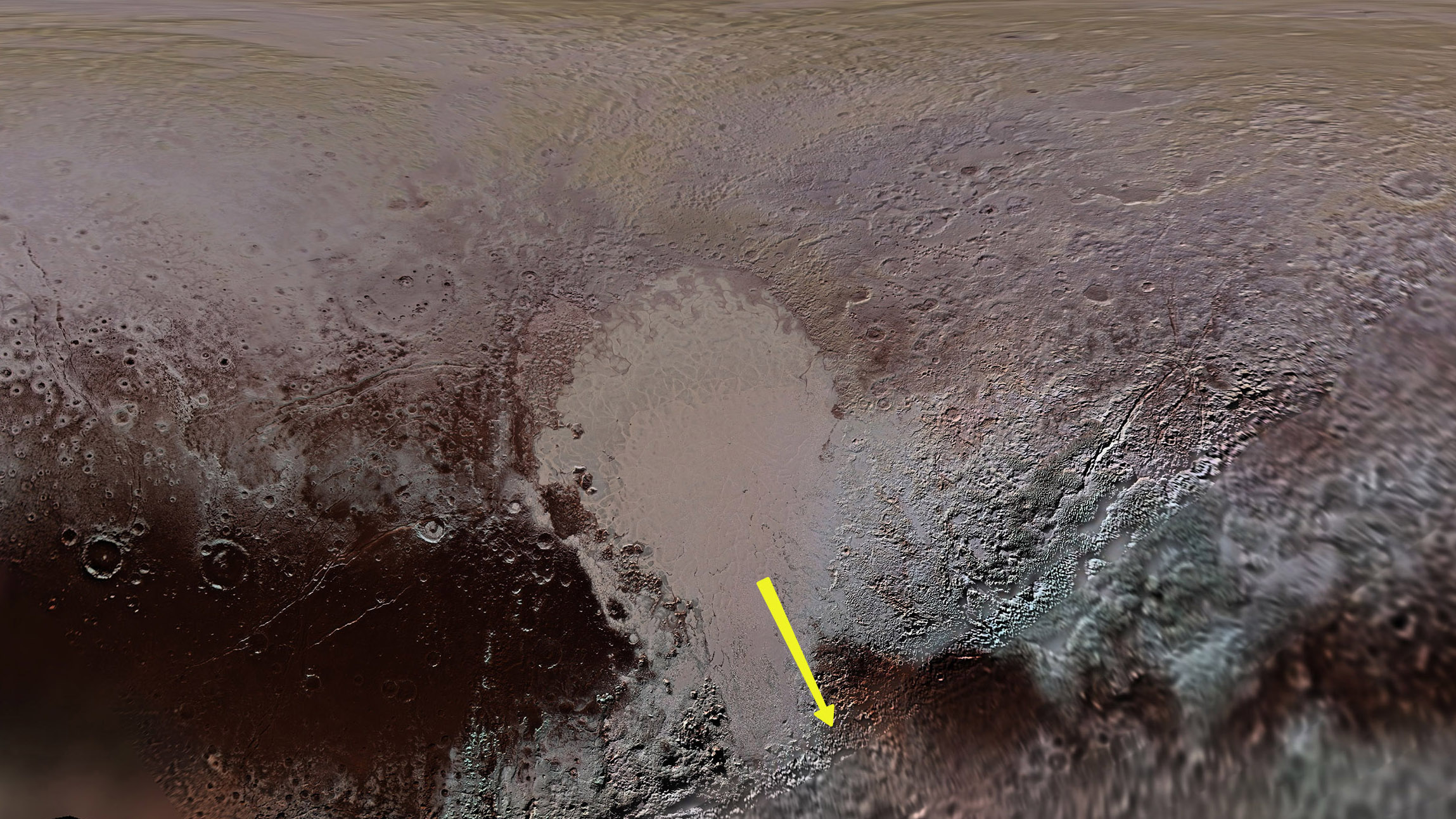NASA celebrates New Horizons' historic Pluto flyby in 2015 with awesome new videos
Features as small as 230 feet (70 meters) can be seen on the surface of Pluto.

NASA has released new visualisations of the dwarf planet Pluto and its largest moon Charon to commemorate the first-ever up close exploration of the distant worlds, which took place six years ago when the New Horizons probe performed its historic flyby.
The new videos take viewers on simulated flights over the two faraway members of the solar system, revealing unprecedented details. Although Pluto and Charon are more than 3 billion miles (4.8 billion kilometers) from Earth, the new video shows features as small as 230 feet (70 meters) on their surface.
"These new high-resolution flyover videos are incredible," New Horizons principal investigator Alan Stern, of the Southwest Research Institute in Boulder, Colorado, said in a statement. "They aren't just scientifically valuable, but they are also engaging, which is why we want to share them with the public."
Related: Destination Pluto: NASA's New Horizons mission in pictures
The videos show the nitrogen-laden ice sheet in the Sputnik Planitia impact basin, which forms part of Pluto's famous "heart." That feature covers a large portion of the dwarf planet's southern hemisphere.
When creating the videos, New Horizons science team member and moviemaker Paul Schenk, from the Lunar and Planetary Institute in Houston, used some of the sharpest images and topographic data acquired by New Horizons during its historic flyby on July 14, 2015, NASA said in the statement.
The black-and-white images were taken by the probe's Long Range Reconnaissance Imager (LORRI) as the spacecraft zipped by the dwarf planet at more than 30,000 mph (48,000 kph).
Breaking space news, the latest updates on rocket launches, skywatching events and more!
The Pluto flyover starts near the center of the Sputnik Planitia ice sheet, revealing the small pits covering its surface. Viewers are then taken to the basin's rugged southeastern rim, which is carved in ice 2 miles (3.5 kilometers) deep.
Schenk also added color data from New Horizons' Multispectral Visible Imaging Camera (MVIC) to bring out the reddish hues in Pluto's highlands.
The flight over Charon shows the low-lying icy volcanic plains in the moon's Vulcan Planitia, then moves toward the fractured northern plains some 300 miles (500 km) away. Prominently visible are several mountains that rise about 1.5 to2.5 miles (3 to4 km) above the volcanic plains. The images in this narrow strip show surface details as small as about 450 feet (140 m) across, NASA officials said.
New Horizons flew by an even more distant world, the small Kuiper Belt object Arrakoth, on New Year's Day 2019. And the probe isn't done yet; it continues its journey through the outer edges of the solar system on an extended mission, which may include a third flyby if the team can find a suitable target. The probe is currently located some 4.6 billion miles (7.4 billion km) from Earth.
Follow Tereza Pultarova on Twitter @TerezaPultarova. Follow us on Twitter @Spacedotcom and on Facebook.
Join our Space Forums to keep talking space on the latest missions, night sky and more! And if you have a news tip, correction or comment, let us know at: community@space.com.

Tereza is a London-based science and technology journalist, aspiring fiction writer and amateur gymnast. Originally from Prague, the Czech Republic, she spent the first seven years of her career working as a reporter, script-writer and presenter for various TV programmes of the Czech Public Service Television. She later took a career break to pursue further education and added a Master's in Science from the International Space University, France, to her Bachelor's in Journalism and Master's in Cultural Anthropology from Prague's Charles University. She worked as a reporter at the Engineering and Technology magazine, freelanced for a range of publications including Live Science, Space.com, Professional Engineering, Via Satellite and Space News and served as a maternity cover science editor at the European Space Agency.
